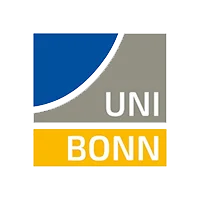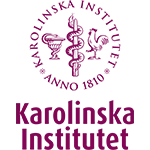Explore the credit course catalogue
9 Results

This workshop provides a hands-on learning experience with a focus on a wider variety of AI tools, their ethical implications and their practical applications. The aim is to facilitate the responsible and efficient use of AI-based tools in research and academia.
Content:
- Understand the importance of using AI in research and academia and assess the benefits and risks involved
- Craft effective prompts for your research tasks
- Develop strategies to integrate AI tools into your research workflow
- Stay informed about and adapt to new developments in the field of AI
At the end of the workshop, you will receive a list of generative AI prompts useful in research and academia. There will be practice sessions during the workshop for which you will need access to AI tools, particularly ChatGPT/GPT-4o. If you do not have an account with ChatGPT/GPT-4o, alternatives like Microsoft Copilot, Google Bard or Claude.ai could also be used.

This seminar focuses on the increasing importance of Artificial Intelligence (AI) in academic research and writing, providing practical insights into AI technologies; use in these areas.The workshop explores ChatGPT and prompt engineering, as well as other academic AI tools to aid research and writing, examining both benefits and challenges. Ethical aspects, such as copyright and authenticity of research results, are discussed, with the goal of equipping participants with practical knowledge and skills to effectively utilize AI in daily research through interactive elements like case studies and group discussions.

The course is practical and aims at teaching students how to:
- Use the programming environment R and RStudio, which includes installation, how to handle errors, problem solve and access helper documents.
- Use basic concepts of programming, such as data types, logical and arithmetic operators, if else conditions, loops and functions.
- Use common R packages to perform basic statistical analysis (e.g., t-test, chi2-test, correlation) and visual presentation (e.g., boxplot, histogram and heat-map) of data in R.
The course is structured with the intent to gradually make students more autonomous in writing code. Starting by introducing a concept through a lecture, then providing formative quizzes and tasks relateed to the concept. This all leads up to a project (exam) where the student gets to combine multiple concepts into a project with the intent of solving a certain problem or displaying specific statistical tests of visual components.

Do you need to turn data into a publication figure? We offer tools and confidence for the student to independently select a statistical method for research questions in their field. The course is practical and includes implementing a basic statistical analysis in R, the leading statistical programming language in bioinformatics and medical science. Furthermore, we give a brief introduction to visualization in R, with a focus on R/ggplot2. Students can bring data from their own research project, or work on data from the course.

The course aim is that the doctoral student develops a theory of science approach by enabling the doctoral student to understand, employ, reflect upon and critically assess concepts and ideas of theories of science as well as their implications for in particular medical scientific practice. A further aim is to enable the doctoral student to understand, reflect upon and critically assess views on and implications of definitions of health and disease.

This course takes you on a journey into the exploration of how the brain shapes and enables our social and affective behaviors. We will examine key questions, such as how we learn from each other, when and in what ways social norms influence us, and how our communication and social decision-making unfold.

The course covers the theoretical background to the brain imaging methods sMRI, fMRI, PET, EEG and MEG, such as what aspects of the human brain's structure and function they register, and the operation principles of the imaging instruments. The coursed gives the student a good understanding in how the different methods are used within in academic research as well as within health care. The course also addresses how the imaging methods can be combined in multimodal analyses, and discusses the interplay between development of theory, instrumentation, method, and applications.
The course begins with an introduction to brain imaging methods within neuroscience. In separate course modules, the course then offers the student a deeper understanding of the different methods sMRI, fMRI, PET, EEG and MEG, as well as combining them in multimodal brain imaging. Finally, the students will deepen their knowledge on a topic of their choice in an individual study project.

The course aim is that the doctoral student develops a theory of science approach by enabling the doctoral student to understand, employ, reflect upon and critically assess concepts and ideas of theories of science as well as their implications for in particular medical scientific practice. A further aim is to enable the doctoral student to understand, reflect upon and critically assess views on and implications of definitions of health and disease.
The course is given online. The teaching and learning activities used are web lectures, written examination, individual writing exercises, an individual written assignment, and reading of course literature and other distributed materials.

The course reviews central concepts and topical research in stress, sleep and health. In particular, it is focused on how acute stress, chronic stress, diurnal rhythm and sleep problems affect and interact physiological systems such as the immune system, the endocrine system, cognitive processes and possible consequences for health. The course encompasses neuroscientific and other biological perspectives, and describes interventions to improve stress- and sleep related symptoms. Theoretical models and methods to understand and study stress- and sleep related processes will be applied.
The course will be provided fully online, partly via Zoom but also taking advantage of recent digital tools such as Gather; and using Canvas as the learning platform in-between in-class sessions.


